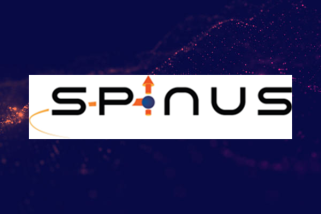
Big data boosting A.I.
If you look at the individual processors in a modern supercomputer, sure they are fast and probably more powerful than what you have in your own machine – but not by much and that is not where their power is coming from. Their power is coming from many of these processors running in parallel, processing huge batches of data simultaneously and exchanging data between them quickly. Yet, there a number of problems that bring these supercomputers to their capacity.
Here is where quantum computers come in: They can prepare registers in a way that explores a lot of input at the same time – all within a single processor, no need for many copies. This idea comes with a catch – before you look at the result, you need to make sure all comes together into a single result, otherwise you do not way if what you get is right.
Sounds difficult? There are solutions for that, found by researchers over the last 25 years. These sound rather abstract – algorithms for quantum computers process signals, search unsorted databases, look for smallest or largest numbers of complicated mathematical objects. But many of them are what drives the services we get from big data and artificial intelligence and other applications. They use quantum physics to explore many possible test solutions at the same time and then slowly confirm to the best one.
These are services that you would usually use through the cloud. A good example is routing you through morning traffic (if you use a car) even better. This relies on artificial intelligence learning what traffic patterns predict long lineups – learning from these big data can be made faster by the parallel computing of a quantum computers. It also relies on finding the fastest way through traffic – an optimization problem that is expected to benefit from quantum computers trying candidate routes much faster.
These techniques require a large quantum computers that is very resilient to errors – it will probably take a while until we are there. But even today it is possible to learn and explore these quantum algorithms on small quantum computers. And we see new applications appearing at fast pace – for example for financial analysis.
What are big computers doing nowadays and how are they doing it? If you look at the individual processors in a modern supercomputer, sure they are fast and probably more powerful than what you have in your own machine – but not by much and that is not where their power is coming from. Their power is coming from many of these processors running in parallel, processing huge batches of data simultaneously and exchanging data between them quickly. Yet, there a number of problems that bring these supercomputers to their capacity.
Here is where quantum computers come in: They can prepare registers in a way that explores a lot of input at the same time – all within a single processor, no need for many copies. This idea comes with a catch – before you look at the result, you need to make sure all comes together into a single result, otherwise you do not way if what you get is right.
Sounds difficult? There are solutions for that, found by researchers over the last 25 years. These sound rather abstract – algorithms for quantum computers process signals, search unsorted databases, look for smallest or largest numbers of complicated mathematical objects. But many of them are what drives the services we get from big data and artificial intelligence and other applications. They use quantum physics to explore many possible test solutions at the same time and then slowly confirm to the best one.
These are services that you would usually use through the cloud. A good example is routing you through morning traffic (if you use a car) even better. This relies on artificial intelligence learning what traffic patterns predict long lineups – learning from these big data can be made faster by the parallel computing of a quantum computers. It also relies on finding the fastest way through traffic – an optimization problem that is expected to benefit from quantum computers trying candidate routes much faster.
These techniques require a large quantum computers that is very resilient to errors – it will probably take a while until we are there. But even today it is possible to learn and explore these quantum algorithms on small quantum computers. And we see new applications appearing at fast pace – for example for financial analysis.



